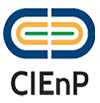The FDA’s Center for Drug Evaluation and Research (CDER) approved 48 novel drugs in 2019 (Table 1). Although this approval count falls short of CDER’s record 59 approvals of 2018, it still comes in as the third biggest approval class in the past 25 years (Fig. 1). CDER’s 5-year rolling approval average now stands at 44 new drugs per year, double the nadir of 22 in 2009… Click here to original publication. Fonte: 80 | February 2020 | volume 19 www.nature.com/nrd…
New Drug Therapy Approvals 2019
Advancing Health Through Innovation: New Drug Therapy Approvals 2019 IMPACT INNOVATION PREDICTABILITY ACCESS FDA’s Center for Drug Evaluation and Research January 2020 Click here to original publication. Fonte: FDA’s Center for Drug Evaluation and Research…
PARP inhibitor pick- me-up
PARP inhibitors seemed down for the count in 2011, after Sanofi’s iniparib failed in a phase III trial in triple- negative breast cancer and AstraZeneca’s olaparib suffered a setback in ovarian cancer. But as drug developers realized that iniparib was not a true PARP inhibitor, and adopted a more cautious clinical trial strategy, the class mounted a comeback. In the past 5 years the FDA has approved four PARP inhibitors, from AstraZeneca, Clovis, GlaxoSmithKline and Pfizer, most notably for ovarian and breast cancers in patients…
FDA new drug approvals in Q3 2019
The biggest approval of the third quarter was not a new drug, but an oral version of Novo Nordisk’s semaglutide, branded Rybelsus, which has a consensus sales forecast of $3.3 billion in 2024. Rybelsus is entering a crowded field with over six other glucagonlike peptide 1 receptor agonists already approved, including Novo’s once- weekly injectable version of semaglutide, Ozempic… Click here to original publication. Fonte:816 | NOVEMBER 2019 | volume 18 www.nature.com/nrd…
Gene therapy successes point to better therapies
The drug Zolgensma was recently in the news for all the wrong reasons. In August, the US Food and Drug Administration (FDA) gave drug manufacturer AveXis, Inc, a subsidiary of Novartis AG, a major slap on the wrist for violations related to the approval of Zolgensma, a new treatment for spinal muscular atrophy (SMA). The agency said the company had failed to promptly report to the proper regulatory authorities issues of datamanipulation in some product testing.Ominous newspaper headlines followed… Click here to original publication. Fonte: 23866–23870 | PNAS | November…
Anti-CD3 drug keeps diabetes at bay
The first drug to ever slow the progression from pre-diabetes to clinical type 1 diabetes is one step closer to reaching the market. On August 5, the US Food and Drug Administration (FDA) granted breakthrough therapy designation to teplizumab, a CD3-targeted antibody from Provention Bio, to prevent or delay type 1 diabetes onset among children and adults at high risk of developing the disease… Click here to original publication. Fonte: Nature Biotechnology | VOL 37 | OCTOBER 2019 | 1099–1109 | www.nature.com/naturebiotechnology…
Upcoming market catalysts in Q4 2019
Important catalysts expected to occur during the fourth quarter of 2019 include US approval decisions for brolucizumab in wet age- related macular degeneration (AMD) and for a long- acting cabotegravir and rilpivirine combination, CARLA, to treat HIV-1 infection, as well as top- line results from a phase III study of SAGE-217 in major depressive disorder (MDD). Click here to original publication. Fonte: 738 | OCTOBER 2019 | volume 18 BiObusinEss BRiEfs www.nature.com/nrd…
Claudin-9 structures reveal mechanism for toxin-induced gut barrier breakdown
The human pathogenic bacterium Clostridium perfringens secretes an enterotoxin (CpE) that targets claudins through its C-terminal receptor-binding domain (cCpE). Isoform-specific binding by CpE causes dissociation of claudins and tight junctions (TJs), resulting in cytotoxicity and breakdown of the gut epithelial barrier. Here, we present crystal structures of human claudin-9 (hCLDN-9) in complex with cCpE at 3.2 and 3.3 Click here to original publication. Fonte: www.pnas.org/cgi/doi/10.1073/pnas.1908929116…
Gene therapy’s next installment
At the end of May, Zolgensma was approved by the US Food and Drug Administration (FDA) as a gene therapy for children up to the age of two with spinal muscular atrophy (SMA). This was followed on June 3 by the European Commission’s marketing authorization for Zynteglo, a gene therapy against transfusiondependent β-thalassemia in patients 12 years or older. While patient groups hailed the news, the price of these products provoked sticker shock: Zolgensma costs $2.1 million; Click here to original publication. Fonte: Nature Biotechnology | VOL 37…
FDA new drug approvals in Q2 2019
The most prominent approval in the second quarter of 2019 was Novartis’s pioneering gene therapy for spinal muscular atrophy (SMA), Zolgensma (onasemnogene abeparvovec), a rare neuromuscular disease with a typical life expectancy of less than 2 years if untreated. Click here to original publication. Fonte:NATure Reviews | Drug DIScovery volume 18 | August 2019 | 575…
